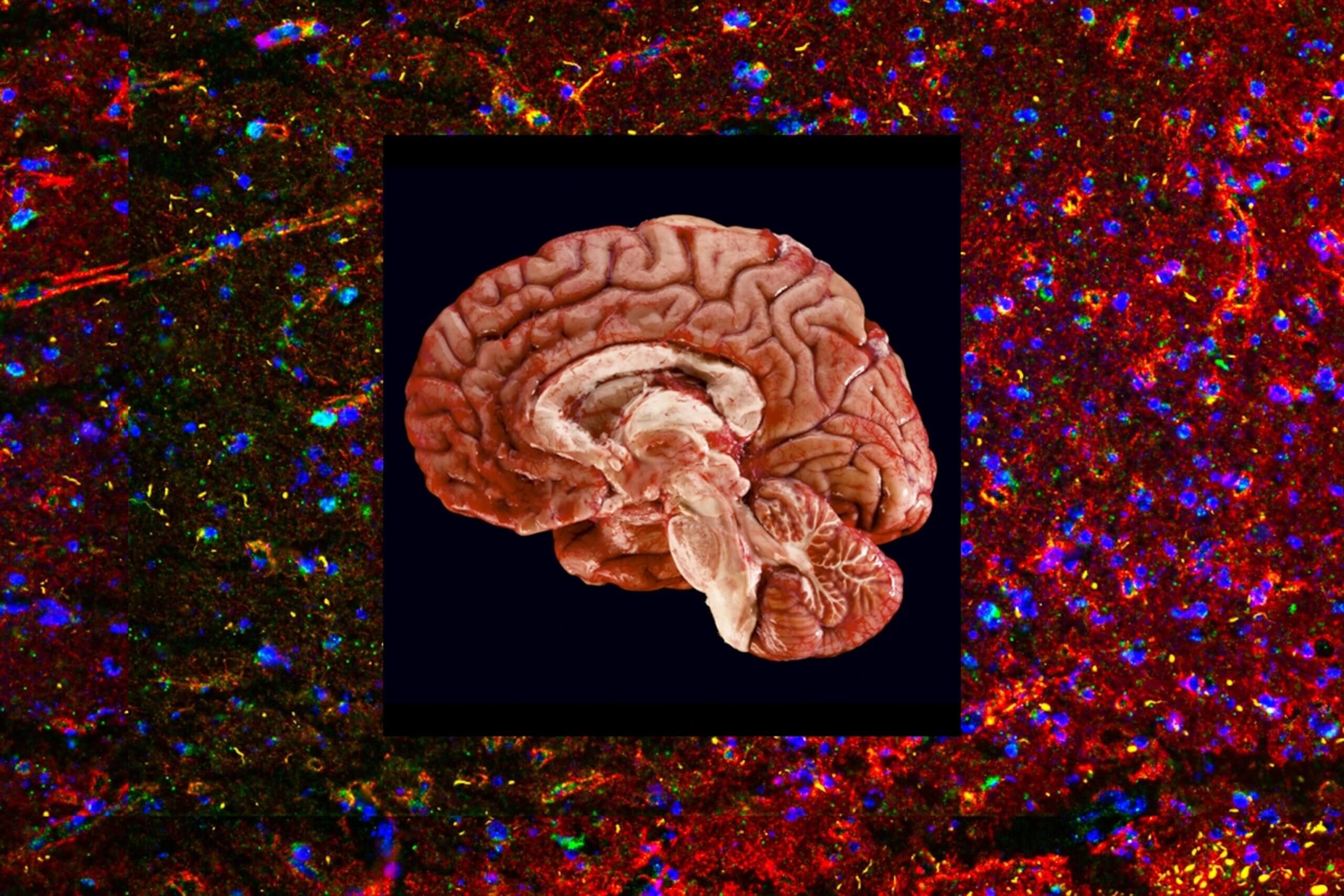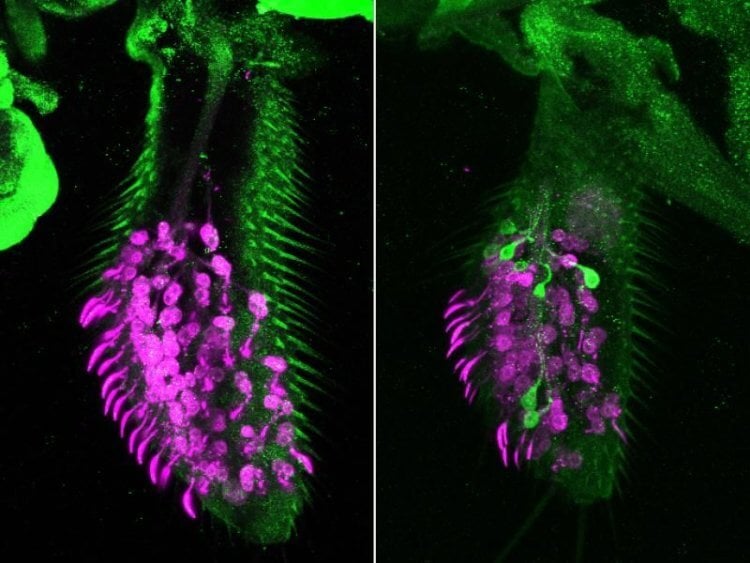The brain is the most complex organ of the human body. Its design and operation raise a huge number of questions, the answers to which scientists have been collecting bit by bit for years. For example, we know that the brain structure that plays a key role in learning (the cerebellum) does an excellent job, but the mechanism by which this process occurs is not fully understood. Moreover, researchers continue to make amazing discoveries and are even finding previously unknown neurons in the brain. Thus, a team from the Portuguese Champalimaud Foundation discovered so-called “zombie neurons” that supposedly help the brain learn. And no, «zombie neurons» – these are not monsters or dangerous cells, but functionally living cells that for some reason cease to interact normally with other cells. At the same time, they help the cerebellum cope with its work.

So-called «zombie neurons» have been discovered in the brain. What it is? Image: /i.natgeofe.com
Contents
- 1 «Zombie neurons» and fruit flies
- 2 Cerebellum, learning and Purkinje cells
- 3 «Zombie neurons» do not help you learn
- 4 Brain Science
«Zombie Neurons» and fruit flies
In 2020, researchers from the University of Lausanne (UNIL) and the Max Planck Institute for Chemical Ecology studied the brains of fruit flies (Drosophila melanogaster) in an attempt to prevent neuronal death during brain growth. A study published in the journal Science Advances states that when cell death is stopped, new neural connections develop in the brain, the functions and properties of which are not identical to the functions and properties of existing neurons.
This means that preventing the death of neurons during brain growth in fruit flies is caused by so-called «zombie cells» functioning neurons. When neurons that normally die are protected from apoptosis(cellular suicide), they turn into so-called zombie neurons.

The olfactory organ of the fruit fly. Left — a fly whose neurons are highlighted in purple. On the right is a fly whose neurons, doomed to death, were preserved by researchers and turned into new zombie neurons (light green). Image: crick.ac.uk
As the brain develops, large numbers of neurons destroy themselves as part of an important regulatory mechanism that removes excess cells. In certain areas of the human brain, apoptosis affects about 50% of neurons, note the authors of the scientific work.
In the course of the work, scientists genetically suppressed the last stage of apoptosis in the neurons of the olfactory system of flies and found that the rescued “zombie cells”, which otherwise would have been destroyed, turned intofunctioning olfactory neurons capable of recognizing odors. Thus, according to one of the co-authors of the study, Lucia Prieto-Godino, apoptosis is one of the factors responsible forHow mosquitoes and fruit flies adapt to different environments over time.
«From an evolutionary perspective, our results suggest that changes in cell death patterns in the nervous system may allow a species adapt to new environmental conditions,promoting the evolution of new populations of neuronswith new structural and functional properties,” says Richard Benton, one of the authors of the scientific work.
You might be interested: Scientists have created a detailed 3D map of the fruit fly brain
Cerebellum, learning and Purkinje cells
Now scientists studying the learning process in mice have accidentally stumbled upon zombies -neurons» and found out exactly what role they play in this process. A paper recently published in the journal Nature Neuroscience says it's all about the cerebellum and how it absorbs information from the environment.
Note that neuroscientists have been arguing for more than half a century about how exactly the cerebellum—a key part of the brain involved in motor control and learning—actually learns. The leading theory proposed that learning signals are transmitted along ascending fibers to the cerebellar cortex, causing long-term changes in Purkinje cells, the main output cells of the cerebellum.

Purkinje cells are pyriform neurons of the cerebellar cortex, one of the largest in the brain.
Image: cdn2.psychologytoday.com
However, there is no definitive evidence for the «climbing fiber hypothesis» was not, although some studies have suggested that changes in Purkinje cell output alone, without the involvement of climbing fibers, may promote learning.
Read even more interesting articles on our Yandex.Zen channel – articles that are not on the website are regularly published there!
Strikingly, the results of a new study provide compelling evidence that climbing fibers actually provide the necessary learning signalsfor cerebellar learning. Using optogenetics, in which cells are manipulated using light, and learning tasks performed by mice, the researchers were able to demonstrate the key role of climbing fibers in this process.
Moreover, the activity of climbing fibers is simply necessary and even sufficient for a form of associative learning. But what does «zombie neurons» have to do with it?
«Zombie neurons» do not help to learn
This is where the fun begins – in an attempt to understand exactly how the cerebellum learns, scientists paid attention to the “zombie cells” that appeared after the introduction of the light-sensitive protein rhodopsin-2 (ChR2) to mice as part of optogenetic manipulation, which turned out to zombify the cells ascending the fibers.
To put it somewhat more simply, under the influence of ChR2 «zombie neurons» were still active, but the messages they convey to normal cells were not transmitted further. Essentially, these electrical impulses were somehow disconnected from other neural connections, whichdeprived the mice of the ability to learn.

The results of a new study show that even minor disruptions in climbing fiber signaling can significantly impair cerebellar-dependent learning. Image: i.guim.co.uk
It turned out that introducing ChR2 into the ascending fibers changed their natural properties, preventing them from responding properly to standard sensory stimuli, such as a puff of air. This, in turn, completely blocked the animals' ability to learn, says neuroscientist Megan Carey from the Champalimaud Center for the Unknown.
The results of the scientific work give us a much more accurate understanding of how learning occurs in the cerebellum of mice. And given the similarities between mouse and human brains, it's reasonable to assume that the same processes are involved.
Don't miss: The unexpected benefits of aging zombie cells in salamanders
Brain Science < /h2>
Let us note that the science of the brain and everything about how and what it learns is of great interest not only among scientists, but also among ordinary mortals. The new knowledge is especially exciting because we already know that the brain adapts to change and changes over time. And the more we know about the brain, the better we can protect it and keep it healthy. Well, the authors of the scientific work intend to understand why the expression of ChR2 leads to «zombie» neurons, and determine whether the findings generalize to other forms of cerebellar learning.

Zombie cells don't help mice learn. Image: d.newsweek.com
So, a key next step will be to study in more detail how climbing fiber activity patterns encode the learning signals that drive the full range of cerebellar-dependent behaviors, from motor coordination to cognitive function. functions and information processing.
You may be interested in: What determines brain health and how to maintain it?
Thanks to more precise tools that are now available to monitor and manipulate specific elements of the cerebellum, this area is ready for rapid progress, which, of course, is good news!